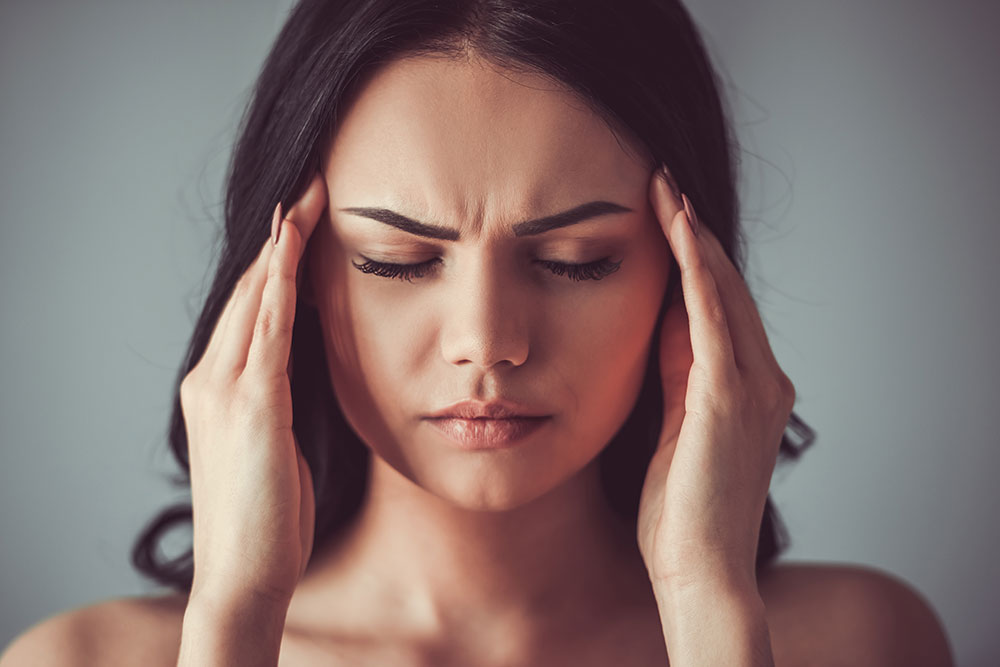Migraines are severe and intense headaches that can last for hours or even days and are often accompanied by sensitivity to light and sound. Millions of Canadians have been diagnosed with migraine headaches and have reported that migraines severely impact their daily life, including driving, work and sleep.
While traditional methods such as medications are often necessary to treat migraine symptoms, there are also many natural, safe and effective approaches for migraine treatment. Natural methods of migraine treatment have some important benefits, such as reducing your need for migraine medication and enhancing your overall quality of life.
Here are some of the best home remedies for migraine treatment that can help you feel better without having to make the trip to the doctor’s or to the pharmacy.
1. Dim the lights
Since migraine headaches can increase your sensitivity to visual stimulation, if you feel the onset of a migraine, you should turn off the lights. Sometimes, being exposed to flickering or bright lights can also trigger or exacerbate migraines, as well as the blue light emitted by your electronic devices. To reduce your exposure to flickering lights, you can install light-emitting diode (LED) lights or compact fluorescent lightbulbs (CFL) in your home. Moreover, if you need to go outside, you should wear sunglasses.
2. Stay hydrated

Dehydration can trigger the onset of migraine and tension headaches. In addition, being dehydrated can even exacerbate migraine symptoms, such as loss of concentration and irritability. Therefore, if you suffer from migraine headaches, it is important to stay hydrated throughout the day.
Moreover, if you feel a migraine coming on, you should drink some water to help relieve the symptoms. To ensure you are drinking enough water, you can keep a marked water bottle with you throughout the day and increase your intake of water-rich foods.
3. Apply a cold compress
If you feel the onset of a migraine headache, you can place a cold pack on your forehead. If you don’t have a cold pack, you could use a bag of frozen vegetables or wrap some ice cubes in a towel. According to scientific research, applying a cold compress to the head and neck during migraines can help to reduce inflammation and blood flow to the affected area, while slowing down nerve conduction and alleviating pain. You can try to keep the cold compress on your head or neck for bouts of 10-15 minutes with breaks in between.
4. Have a caffeinated drink
If you suffer from migraine headaches, it is best to avoid regularly consuming caffeine, which can trigger migraine headaches and increase their frequency. However, paradoxically, drinking a caffeinated beverage, such as a cup of coffee, can provide some symptom relief when you have a migraine. This is because caffeine acts as a stimulant and can boost alertness while constricting blood vessels in the head and neck, slowing down blood circulation and reducing nerve impulses which cause pain.
5. Do some relaxation exercises
Practicing relaxation exercises can help to reduce pain symptoms when you are in the middle of a migraine. These include gentle yoga exercising and stretching, as well as biofeedback exercises and progressive muscle relaxation. Breathing exercises can also help you relax and cope with a migraine, such as deep breathing and rhythmic breathing. In addition, research shows that guided imagery exercises that involve visualizing scenes of peaceful imagery can help to reduce pain perception during a migraine attack.
6. Massage
To alleviate the symptoms of a migraine attack, you can also try gently massaging your temples and the muscles in your upper shoulders and neck to reduce muscle tension and diminish the pain. For difficult-to-reach areas at the back of your shoulders and neck, you can try using a tennis ball. You can massage the affected areas in intervals and take small breaks in between.
7. Have a ginger tea
According to the results of scientific studies, ginger can be effective in treating migraine headaches. Ginger has already been used in traditional medicine for thousands of years and contains hundreds of beneficial compounds, some of which have anti-inflammatory and muscle relaxant properties. Moreover, taking ginger during a migraine can also help to reduce the symptoms of nausea. You can add some hot water to sliced fresh ginger to make a ginger tea or try taking a ginger supplement.
8. Essential oils
Essential oils can also be used as a natural remedy for migraine headaches. Moreover, there is also some scientific evidence to show that lavender oil inhalation can help to reduce migraine severity in some people. In addition, applying peppermint essential oil to the temples can also be an effective method to alleviate the symptoms of a tension headache.
9. Try a herbal supplement
Some herbal supplements, such as feverfew and butterbur, may be effective in relieving migraine pain and reducing the frequency of migraine headaches. In addition, turmeric and curcumin also have anti-inflammatory properties and can provide some pain relief during a migraine episode. However, since there are also some risks involved in using herbal remedies, it is important to speak to your doctor before trying them.


















